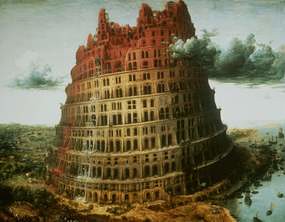International Gothic
 "These paintings are full of naturalistic detail.
"These paintings are full of naturalistic detail. By the end of the 14th century, the fusion of Italian and Northern European art had led to the development of an International Gothic style. For the next quarter of a century, leading artists travelled from Italy to France, and vice versa, and all over Europe. As a consequence, ideas spread and merged, until eventually painters in this International Gothic style could be found in France, Italy, England, Germany, Austria and Bohemia. The International Gothic Style can be described by pointing out its absolute taste for beautiful flowing lines and for dainty motives, the immense desire of refined and elegance, the particular care given to small precise work and the extreme attention to the decorative details. Among the many characteristics that defines this style we can see an intense attention to the realistic and naturalistic contents that shows the artists’ acute observation of human beings and nature. However, because the lack of space the manuscripts and all the small works were over loaded with thin elaborated figures wearing highly fashionable clothes. Foreshortening could be seen on the individual and on the exotic animals. The use of precious materials, again gold, very rare minerals, plants or chemicals, in creating colours; the use of perspective and proportions, even though, in specific ways appealing to the artists’ taste. Human figures, landscapes and spaces in a realistic approach were accompanied by a peculiar quality of dreams, decorative dimension and deep emotional charges. Another very important method that defined this style was that the artist started actually to study the nature and used a sketchbook, and started to gather up groups of sketches of rare and beautiful plants and animals. Where before was sufficient to have just a general knowledge of all and then to adopted into different work of art.
 The Limburg brothers book of hours, Les Trè Riches Heures du Duc de Berry, is considered by common consent one of the supreme masterpieces of manuscript illumination and the archetype of the International Gothic Style. The twelve-page illustration of the months is superb, for the first time a calendar was so lavishly treated. Full of exquisite ornamentation and the naturalistic details are amazingly observed, which strongly suggest their studies on this matter. To conceive this book the Limburg brothers have used a wide variety of colours obtained from minerals, plants or chemicals and mixed with either Arabic or tragacinth gum to provide a binder for the paint. Some of the minerals and materials used to produce these colours were extremely expensive, precious and rare like the Middle Eastern lapislazuli to paint brilliant blues or the green made with especial plants. Moreover all their work, which were executed with amazing fine details and surprising beauty, needed to be achieved with precise and specific brushes and almost certainly lenses.
The Limburg brothers book of hours, Les Trè Riches Heures du Duc de Berry, is considered by common consent one of the supreme masterpieces of manuscript illumination and the archetype of the International Gothic Style. The twelve-page illustration of the months is superb, for the first time a calendar was so lavishly treated. Full of exquisite ornamentation and the naturalistic details are amazingly observed, which strongly suggest their studies on this matter. To conceive this book the Limburg brothers have used a wide variety of colours obtained from minerals, plants or chemicals and mixed with either Arabic or tragacinth gum to provide a binder for the paint. Some of the minerals and materials used to produce these colours were extremely expensive, precious and rare like the Middle Eastern lapislazuli to paint brilliant blues or the green made with especial plants. Moreover all their work, which were executed with amazing fine details and surprising beauty, needed to be achieved with precise and specific brushes and almost certainly lenses.Labels: art, International Gothic, Les Trè Riches Heures du Duc de Berry, Painting



0 Comments:
Post a Comment
<< Home